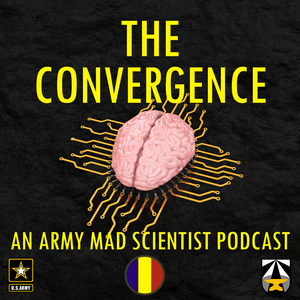108. Soldier Dominance and Battlefield Primacy
Soldier Dominance and Battlefield Primacy
“What we’ve got to think about is, how do we make our Soldiers more effective, how do we maintain that battlefield primacy for our commanders, for our Soldiers, and for our units.”
[Editor’s Note: At the conclusion of Ian Sullivan‘s insightful blog post from almost four years ago, we were provided with a sage and cautionary admonition:
“… I think it is important to ask ourselves which approach are we [the U.S. Army] following on our path to modernization? Are we are trying to revolutionize our approach to warfare, or are we simply trying to modernize a force based on yesterday’s ideas? Is our preferred way of war capable of standing up to our pacing threats’ transformations, or do we need to refine it? ... We must answer the question “Are we doing enough fast enough?” — but we also must inexorably link that answer to an even more fundamental question: “Are we building the right force, with the right people to prevail over adversaries who have thought long and hard about how to defeat us?”
In our latest episode of the Army Mad Scientist’s The Convergence podcast, we sat down with proclaimed Mad Scientist COL Scott Shaw, Director, Maneuver Capabilities Development and Integration Directorate (MCDID), to learn how the Army Futures Command’s presence at the Maneuver Center of Excellence (MCoE), Fort Moore, Georgia, is accomplishing this challenge — helping transform the Army’s maneuver capabilities to ensure our war-winning future readiness — Read on!]
[If the podcast dashboard above is not rendering correctly for you, please click here to listen to the podcast.]
COL Scott Shaw, U.S. Army, is a graduate from the University of Arkansas in August 1996 and was commissioned as an Infantry officer. Prior to his current assignment as the Director, MCDID, COL Shaw was Assistant Chief of Staff, G3, I Corps and Joint Base Lewis McChord. COL Shaw also commanded the U.S. Army Asymmetric Warfare Group, Ft Meade, Maryland, from July 2019 to the unit’s deactivation in May 2021.
COL Shaw has held two combat commands — as the Commander, Headquarters and Headquarters Company, 2nd Brigade, 10th Mountain Division deploying to Kabul, Afghanistan, and as Commander, Company A, 2nd Battalion, 14th Infantry Regiment deploying to Baghdad, Iraq. He has had three additional combat tours in Iraq, plus another in Afghanistan, and has served abroad in the Sinai in Egypt, in Kuwait, and in Korea. COL Shaw holds three Master’s degrees – Military History (With Honors) from Norwich University, Military Art and Science from the U.S. Army Command and General Staff College, and Strategic Studies (Distinguished Graduate) from the Marine Corps War College.
COL Shaw has also been a frequent guest of The Convergence podcast and is a proclaimed Mad Scientist.
Army Mad Scientist sat down with COL Shaw to talk about the Maneuver CDID, how it supports Army innovation, and how you can contribute to its mission. The following bullet points highlight the key takeaways from our conversation:
A capabilities development and integration directorate (CDID) is the Army Futures Command’s lead for an Army force modernization proponent. The Maneuver CDID (MCDID), specifically, determines and develops future force capabilities and future infant...

